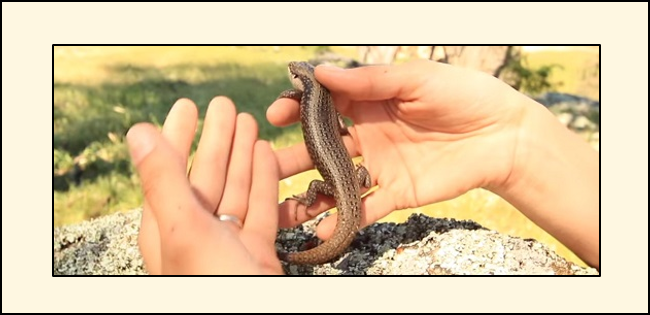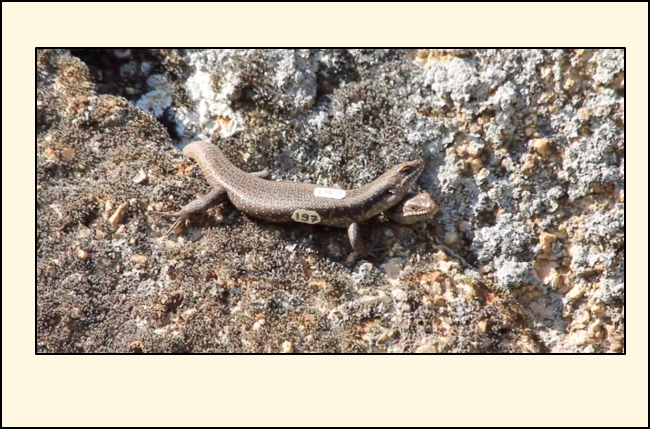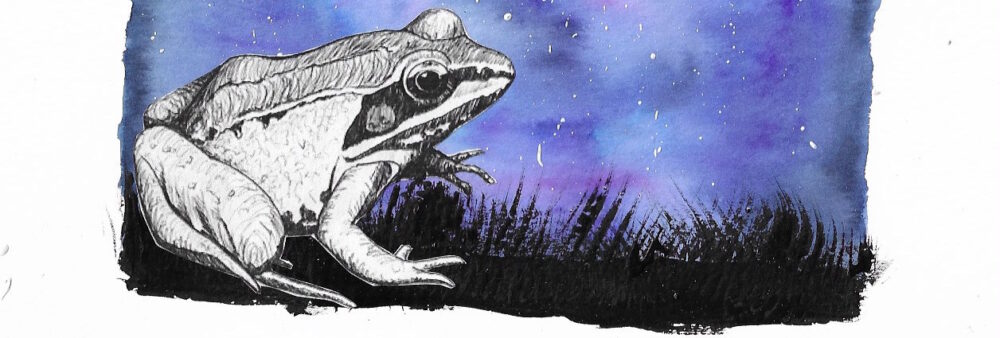By Eli Estey
Have you ever felt like differences in the company you keep, or the lack thereof has had the ability to change things like your own social behaviors, or other aspects of your person? If so, you’re not alone! Through investigating Early social environment influences on the behaviour of a family-living lizard, Dr. Julia Riley was able to uncover a variety of ways in which changes to social environments had significant impacts on behavior and other characteristics of tree-crevice skinks (Egernia striolata).
We often dissociate ourselves from reptiles such as thetree-crevice skink, it’s true, but thanks to researchers such as Dr. Julia Riley, we’re realizing now more than ever that we may have much more in common with reptiles than we’ve previously thought.

So often people find it difficult to relate to the ecology of species and why they do the things they do. For some reason this seems to be particularly true with species such as the tree-crevice skink. In cases of larger mammals, we often see bold, distinct similarities to ourselves in the ways that the animals care for each other, defend one another, and even play when circumstances allow.
Lucky for these species, emotional connections are often formed thanks to our superficial similarities. Oftentimes, perhaps otherwise uninterested folks make these connections through watching videos of goofy, charismatic, and almost ‘human-like’ displays of behavior. These sorts of relatable traits allow us as humans to feel closer to these species and more apt to support their conservation efforts. When it comes to gaining public support for scientific research or conservation efforts, the presence or absence of these emotional connections can be a matter of life or death, quite literally.
I had the privilege of speaking firsthand with Dr. Julia Riley about her time studying tree-crevice skinks, the barriers surrounding the conservation of reptiles, and more. We talked about both the differences and the similarities between research and conservation of mammals versus reptiles, and why some people may have a hard time seeing through the scales of these species in order to find out just how in tune with their social environments they are.

Through her research with Macquarie University, Sydney, New South Wales, Australia, Dr. Julia Riley was able to spend months in the field, observing and collecting gravid tree-crevice skinks for this study. Once the skinks were captured, Dr. Riley and her team reared the young in a variety of settings simulating isolation and social rearing. Similar to how our own social environments may result in different actions, relationships between social environment, dominance/subordinance, aggressiveness, sociality and even size and growth rate were found in tree-crevice skinks (Riley et al. 2017).
One finding of many that came as a result of this study was that skinks reared in isolation exhibited more social behavior, as well as more bold and aggressive tendencies than subordinate skinks which were socially reared (Riley et al. 2017). It is Findings like these that are exactly the type that the public can readily connect with. I’m sure we can all relate to a bit of crankiness coming out of a long stretch being stuck with a friend or family member, and certainly the feeling of longing for social accompaniment after a long period of isolation. Perhaps we aren’t exactly alike when it comes to reptiles and humans, but through studies such as this, perhaps folks can find a better understanding of what life may be like as a reptile, how we might be similar, and what we can do to further their conservation.

To learn more about the sociality of reptiles, tree-crevice skinks and more take a look at rileybiology.com!
Literature Cited
Riley, J. L., D. W. A. Noble, R. W. Byrne, and M. J. Whiting. 2017. Early social environment influences the behaviour of a family-living lizard. Royal Society Open Science 4:161082.
Dr Julia Riley. n.d. <https://www.rileybiology.com/>. Accessed 6 Mar 2020.
